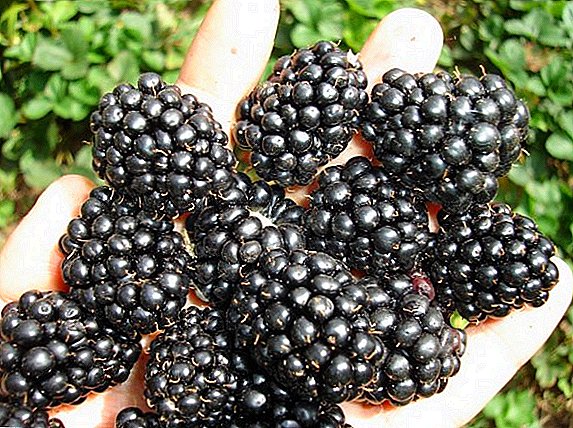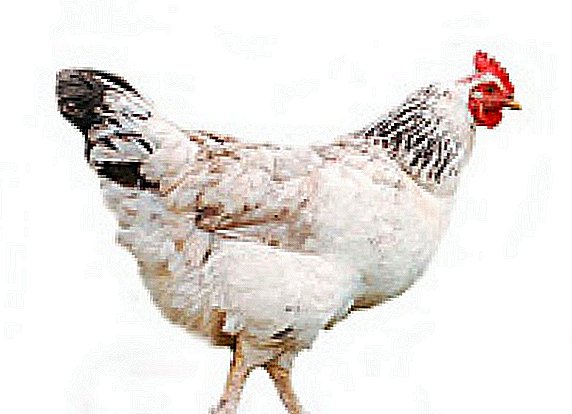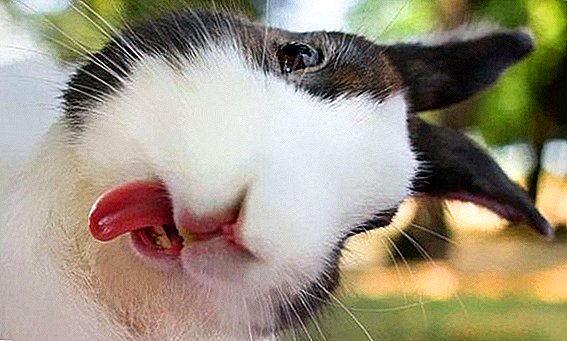
Often, such a pest, like a bear, causes a lot of trouble, so getting rid of this insect and its larvae is always important.
Medvedka leads an underground lifestyle, so sometimes gardeners can’t even immediately understand what caused plants to die suddenly.
Bear eggs
After the mating process, the insect female builds a nest, which is a rounded cave about 10 centimeters long.
This nest lies at a depth of 10-15 cm, it is in it that it leaves eggs, the number of which can reach 500 pieces. So that the eggs are not covered with mold, the bear inverts them from time to time and carefully inspects them.
Since the eggs need to be warm, the bear digs them in a shallow depth, so you don’t have to dig deep to find them. Most often they can be found in the bumps on the surface of the earth. Bear larvae emerge from eggs after about 2-3 weeks.
In this photo you can see how the eggs of a bear bear look:

Description of the larvae
Larva bear able to slightly remind crickets or six-legged spiders with an elongated body. Their size can reach 15 mm. The forepaws of the larvae are turned outward, the larva works with them, raking the ground in front of it.
Its appearance resembles adult insects, with the difference that it is much smaller in size. During its active development, the insect larva molts five times, after which it matures and becomes quite ready for further reproduction.
Medvedka is not particularly resistant to cold conditions, so in severe winters, some insects may die. From that how much fat has accumulated insect, will depend on its survival during the winter days, as well as the subsequent fecundity.
In this photo you can see how the Medvedka's lechka looks like:

The difference between the larva larvae from the May beetle
The larva of such a pest, like a cockchafer, does not look like a white caterpillar, its size reaches 2 cm, and the thickness can be up to 8 mm. Mouth located in front of the larva. and three pairs of small legs that are covered with hairs.
On the sides of the larvae of such an insect you can see brown dots, and its back part is slightly darker in color than the rest of the larvae.
The larva of the bear is completely different from the larvae of the May beetle. When hatching, the larva resembles a small bug, and with each molt it becomes larger in size and acquires a characteristic shape, increasingly resembling an adult bear.
In this photo, you can see how the beetle of the May beetle looks like:

How to fight?
If you do not immediately begin to fight with Medvedka, then her young and adult pests will remain in place for all the following seasons. Such a pest able to easily dig moves in the ground of any typetherefore, Medvedka can make a hole for himself, regardless of weather conditions.
Currently there are several effective meanshelping to get rid of such a pest. The first one is agrotechnical. It lies in the fact that it is necessary to prepare the soil for planting in advance.
In early spring and late autumn, the land needs to be plowed and dug up. Thus, the egg clutches of the bears, larvae will be destroyed, and the underground passages made will be disturbed.
 Planting around the perimeter garden plants such as marigolds, able to permanently get rid of the bear and its larvae. The fact is that the smell of this plant scares off underground pests.
Planting around the perimeter garden plants such as marigolds, able to permanently get rid of the bear and its larvae. The fact is that the smell of this plant scares off underground pests.
Another environmentally safe way to get rid of bears is to lure insects into vegetable oil. In the hole left by the bear, a couple of drops of vegetable oil are pouredafter which a glass of water is poured there. In a couple of minutes, the Medvedka will appear on the surface of the soil, and in a few more minutes it will die.
It is possible to fight the pest using modern insecticides. The smell of granules attracts insects, after which they eat the bait they left behind and, getting out, they immediately die. When using this method, it is very important to collect all the poisoned bears, since birds can also be poisoned by these insects.
Medvedka - insect harmful and dangerous to the crop, capable of rapid reproduction. That is why it is important to fight both with the headstone, and with the larvae and eggs. It is difficult to fight the pest, but it is worth spending time to destroy the insect and, thus, save most of the crop.












